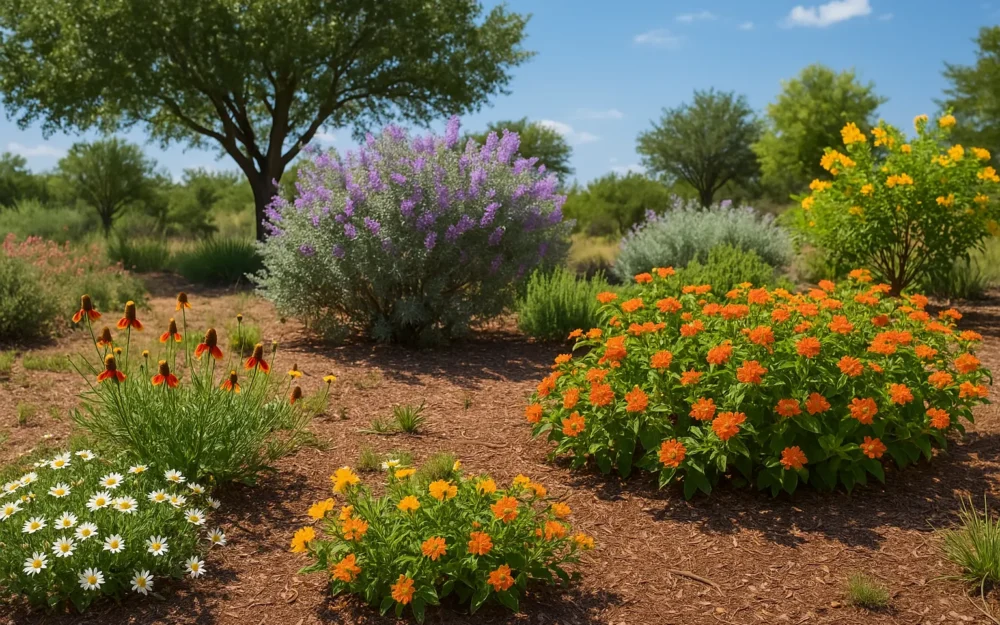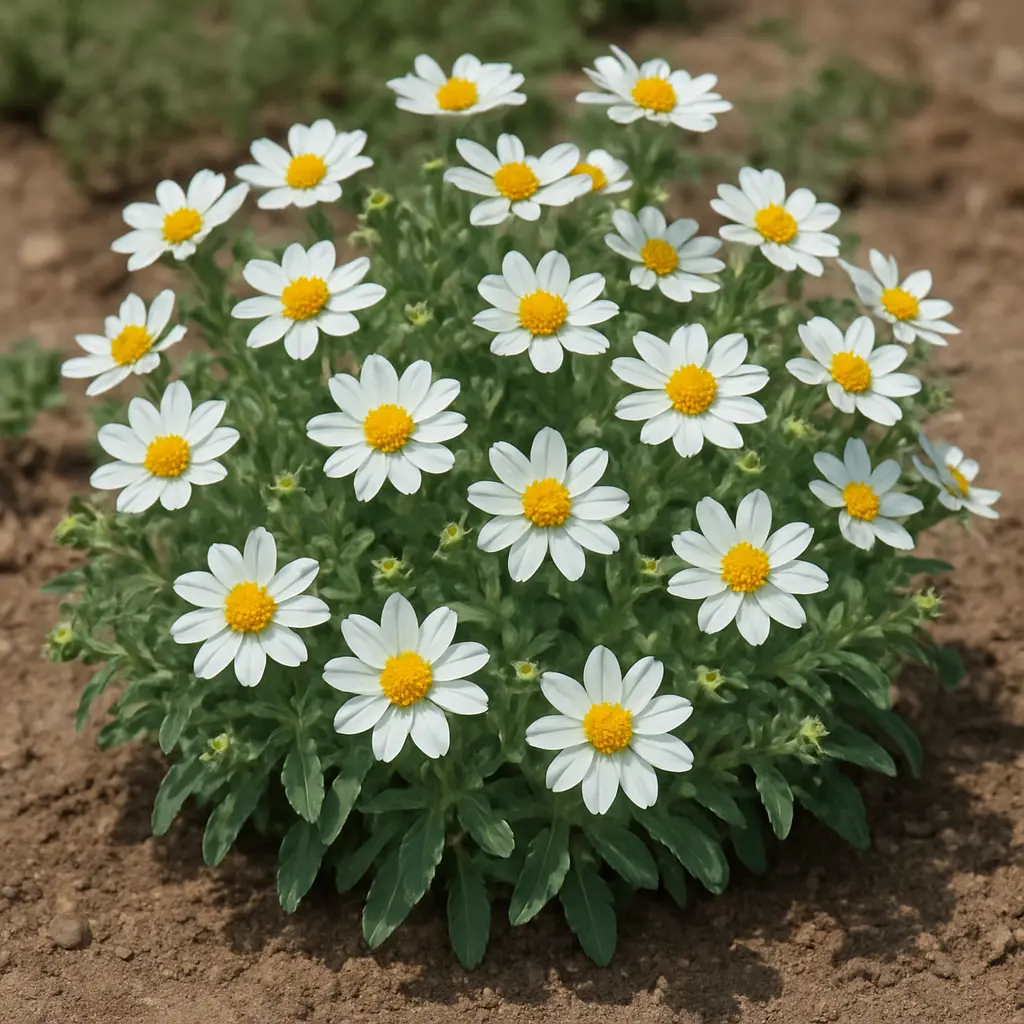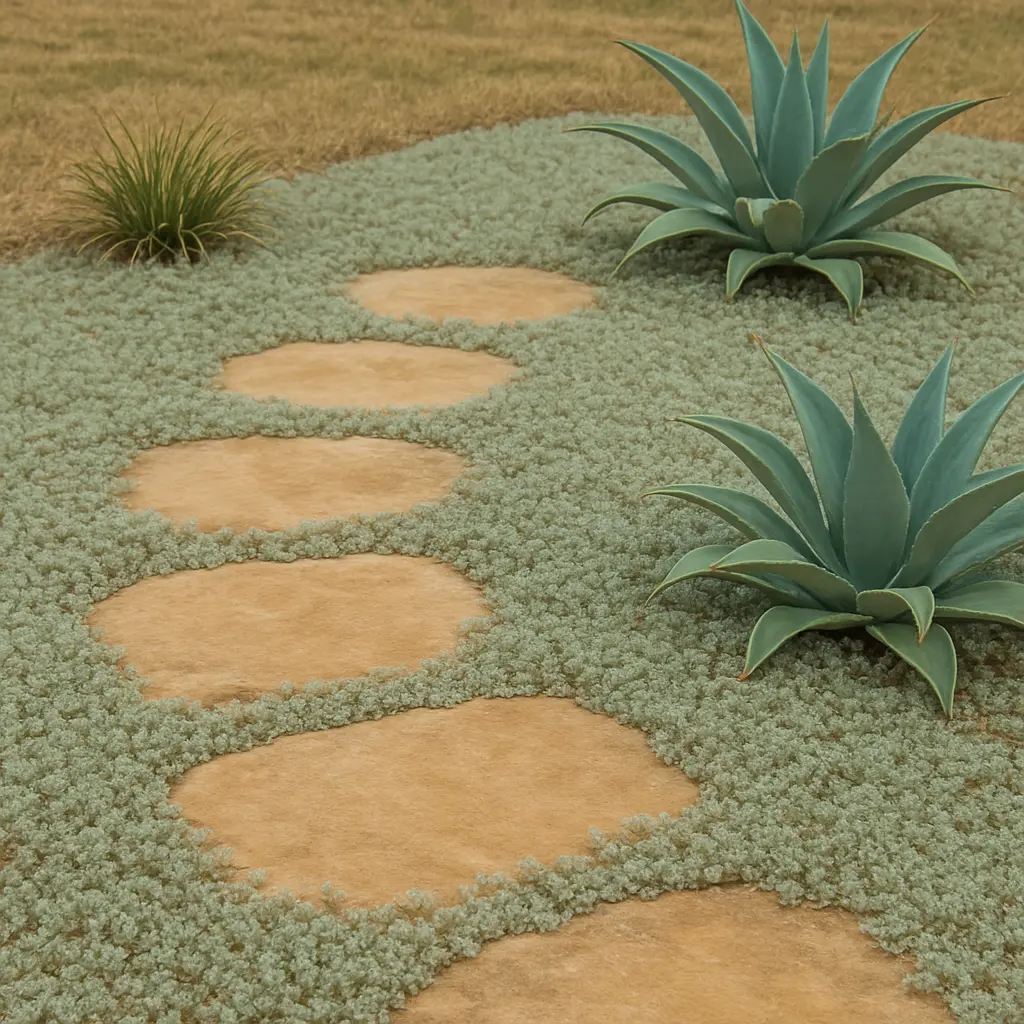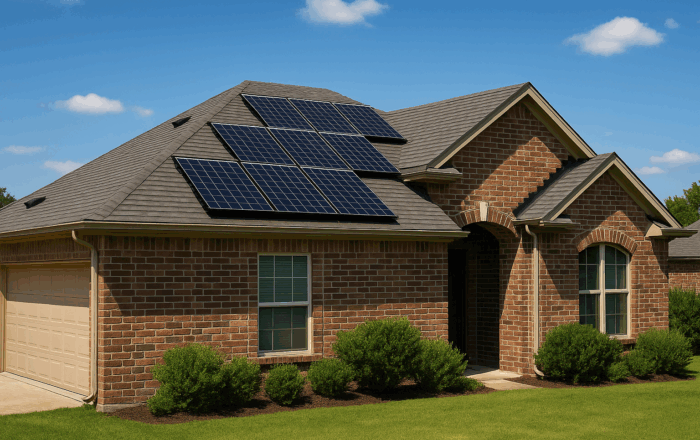Home Improvement Living in Texas
How Many Solar Panels Do You Need in Texas?
4 minute readHow to calculate the number of solar panels you need to power your Texas home
Home > BKV Energy Blog > All Posts > Drought-Tolerant Plants for Texas Gardens
4 minute read • Last update September 2025

Gardening in Texas presents unique challenges. Long, hot summers and frequent droughts mean that traditional landscaping often requires significant water and maintenance. By incorporating drought-tolerant and native plants into your garden, you can create a landscape that thrives in Texas conditions while conserving water and supporting local ecosystems.
Blackfoot daisy
Hardy and long-blooming, Blackfoot daisies require minimal water once established. Their white flowers brighten up garden beds and attract pollinators throughout much of the year.

Mexican hat (Ratibida columnifera)
With its distinctive drooping petals and tall stems, Mexican hat thrives in dry, rocky soil. This wildflower draws butterflies and bees, making it a favorite in pollinator-friendly gardens.
Texas lantana
Known for its colorful clusters of blooms, Texas lantana is highly drought-tolerant and provides nectar for butterflies and hummingbirds. It also spreads well, filling garden beds with vibrant color.
Texas sage (Leucophyllum frutescens)
A classic xeriscaping plant, Texas sage is low maintenance and bursts into purple blooms after rainfall. It’s resilient to poor soil and scorching heat.

Esperanza (Yellow Bells)
This heat-loving shrub produces bright, trumpet-shaped flowers that bloom from spring through fall. It resists drought and adds bold color to landscapes.
Agarita
An evergreen shrub with spiny leaves, Agarita is excellent for privacy hedges and low-water landscaping. In spring, it produces fragrant yellow flowers that support pollinators.
Buffalo grass
One of the best options for Texas lawns, buffalo grass is a native turfgrass that stays green with very little irrigation. It requires far less water than traditional St. Augustine or Bermuda lawns.
Blue grama
This warm-season grass tolerates heat and drought exceptionally well. Its seed heads add ornamental interest, making it useful for naturalized landscapes.
Silver ponyfoot
A fast-spreading groundcover, silver ponyfoot forms a silvery carpet that thrives in dry conditions. It’s excellent for filling gaps between stepping stones or covering large areas with minimal upkeep.

Live oak
A signature Texas tree, live oaks provide massive shade canopies and are extremely drought-resistant once established. They are long-lived and add value to any landscape.
Cedar elm
Cedar elms adapt well to poor soils and thrive in hot, dry climates. Their fall foliage adds seasonal interest while requiring minimal water.
Desert willow
With its pink and purple trumpet-shaped flowers, desert willow is both ornamental and hardy. It performs well in dry conditions and attracts hummingbirds.
| Plant Name | Type | Sunlight Needs | Water Needs | Mature Size | Notes |
|---|---|---|---|---|---|
| Blackfoot daisy | Flowering | Full sun | Very low | 6–12 in. tall | Long-blooming, tough native plant |
| Mexican hat | Flowering | Full sun | Low | 1–3 ft. tall | Attracts butterflies and bees |
| Texas lantana | Flowering | Full sun | Low | 3–6 ft. wide | Bright blooms, attracts pollinators |
| Texas sage | Shrub | Full sun | Very low | 5–8 ft. tall | Purple blooms after rain |
| Esperanza | Shrub | Full sun | Low | 3–9 ft. tall | Heat-loving, showy yellow flowers |
| Agarita | Shrub | Full sun/partial | Very low | 3–6 ft. tall | Evergreen, good for xeriscaping |
| Buffalo grass | Grass | Full sun | Very low | 4–8 in. tall | Excellent low-water lawn option |
| Blue grama | Grass | Full sun | Very low | 1–2 ft. tall | Attractive seed heads |
| Silver ponyfoot | Groundcover | Full sun | Very low | 2–4 in. tall | Fast-spreading groundcover |
| Live oak | Tree | Full sun/partial | Low once est. | 40–80 ft. tall | Iconic Texas shade tree |
| Cedar elm | Tree | Full sun | Low | 40–70 ft. tall | Adaptable to poor soils |
| Desert willow | Tree | Full sun | Very low | 15–30 ft. tall | Ornamental with pink/purple flowers |
Texas faces frequent drought conditions, and rising water costs make water-wise gardening both practical and economical. By using drought-resistant and native plants, homeowners can:
Enhance soil retention by mixing in compost and organic matter. Apply mulch to help lock in moisture, suppress weeds, and regulate soil temperature.
Create irrigation zones by planting species with similar water requirements together. This ensures efficiency and reduces wasted resources.
Install drip irrigation systems to deliver water directly to plant roots. Water early in the morning to minimize evaporation, and always follow local drought restrictions.
Low water landscaping is not just a trend in Texas; it is becoming a necessity. By choosing plants that are adapted to the climate, watering less, and designing smart, homeowners can experience a range of lasting benefits.
One of the most immediate advantages is lower utility bills and long-term savings. Drought-tolerant plants require far less irrigation, which reduces water expenses. They also need fewer inputs, such as fertilizers and pesticides, which lowers overall maintenance costs.
These landscapes also provide greater resilience during droughts. As water supplies remain under pressure and summers grow hotter, gardens built to withstand dry spells continue to thrive while more delicate landscapes wither.
There are clear environmental and ecosystem gains as well. Native and drought-tolerant plants support pollinators, birds, and beneficial insects. According to Texas A&M AgriLife Extension, they also reduce soil erosion and help improve long-term soil health.
Low-water gardens also mean less work for the homeowner. With the right plant choices, landscapes require less tending, fewer resources, and provide year-round enjoyment without the heavy upkeep of water-hungry plants.
Finally, water-wise landscapes enhance property appeal and value. Mature shade trees, thoughtfully placed native plants, and sustainable design not only boost curb appeal but are features prospective buyers actively look for in a Texas home.
Ready to optimize your Texas home landscape and make smart choices for water, soil, and climate? Explore more energy savings tips, Texas weather trends, and sustainable home living ideas on our blog.

Home Improvement Living in Texas
How to calculate the number of solar panels you need to power your Texas home

How to choose the right generator for your Texas home
Get $50 off your electric bill!
Use code BKVEJOINUS50
Enter your zip code to shop BKV Energy's affordable, fixed-rate Texas electricity plans. Use the promo code for $50 off your electric bill.